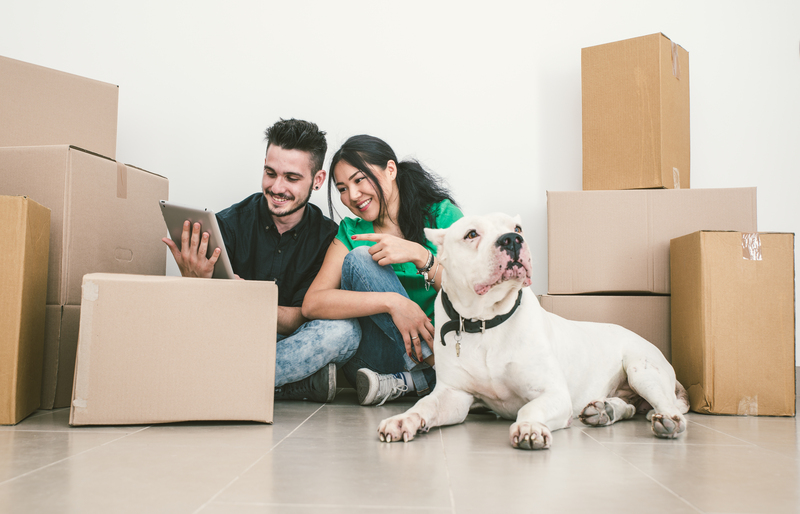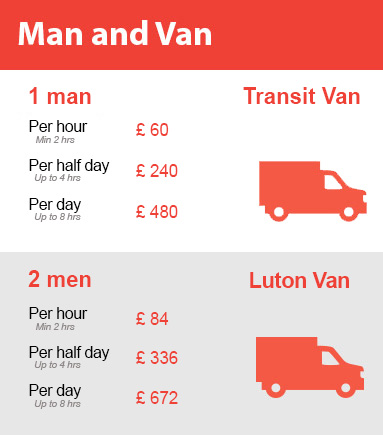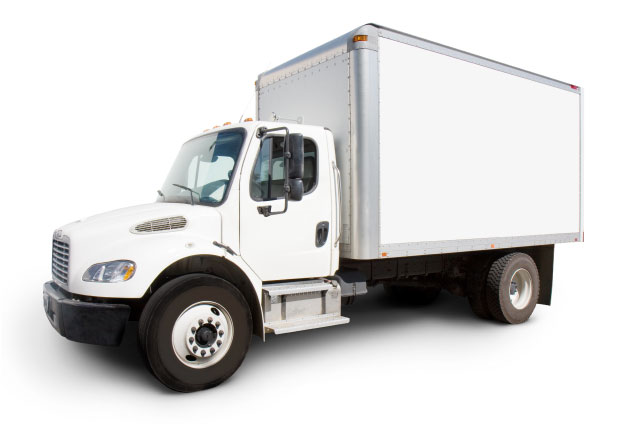Packing Secrets for a Hassle-Free Moving Experience
Posted on 26/06/2025
Packing Secrets for a Hassle-Free Moving Experience
Moving can be an overwhelming process, but with the right packing strategies, your experience can be smooth and efficient. Whether you are relocating across town or to another state, knowing the secrets to hassle-free packing can make all the difference. In this comprehensive guide, we'll unveil essential packing tips, expert organization methods, and innovative ideas for a stress-free moving day. Read on to discover insider secrets, packing supplies, time-saving hacks, and smart labeling approaches for your next move.

Table of Contents
- Planning Ahead for an Efficient Move
- Essential Packing Supplies and Tools
- Decluttering: The First Step in a Smooth Move
- Room-by-Room Packing Strategy
- Packing Fragile and Valuable Items
- Labeling and Organizing Like a Pro
- Maximizing Space in Every Box
- Special Packing Secrets for Extra-Easy Moving
- Prepping for Moving Day: A Final Checklist
- Unpacking Strategies for a Fast Start
- Frequently Asked Questions
Planning Ahead for an Efficient Move
Start early--this is the golden rule of a hassle-free moving experience. The earlier you begin sorting, organizing, and packing, the less stressful your move will be. Effective planning is key to avoiding last-minute chaos and forgotten items.
Get a Packing Timeline
- Six weeks before: Begin gathering supplies and decluttering.
- Four weeks before: Pack non-essentials, such as seasonal items.
- Two weeks before: Focus on lesser-used rooms and items.
- One week before: Pack daily-use items and essentials in 'Open First' boxes.
Tip: Use a printable moving checklist to track progress and important tasks. Planning ahead ensures nothing is overlooked.
Essential Packing Supplies and Tools
Packing like a professional starts with having the right equipment. High-quality supplies protect your belongings and streamline the entire process. Here's what you'll need:
- Sturdy boxes in various sizes
- Packing tape (preferably with a dispenser)
- Bubble wrap and packing paper for padding
- Furniture blankets or moving pads
- Stretch wrap for furniture and drawers
- Permanent markers and labels
- Scissors & utility knife
- Zip-top bags for small parts and screws
- Plastic bins for watertight storage
Investing in quality packing materials is one of the top secrets for a stress-free move; flimsy boxes or weak tape can cause expensive damage.
Decluttering: The First Step in a Smooth Move
Before filling a single box, declutter your home. Moving is an ideal opportunity to evaluate every item and let go of things you no longer need or use.
How to Declutter Effectively
- Sort items into categories: Keep, Donate, Sell, and Toss.
- Start with closets, drawers, and storage rooms--hidden clutter often lurks here.
- Host a yard sale or use online platforms to sell unwanted items.
- Schedule a charity pickup for gently used donations.
- Dispose responsibly of unusable or hazardous items.
Remember: Less clutter means fewer items to pack, move, and unpack--saving you time, energy, and money.
Room-by-Room Packing Strategy
Packing one room at a time is a game-changer. It keeps things organized and helps you stay focused. Here's an efficient method to tackle each space:
Kitchen
- Wrap dishes individually with packing paper or bubble wrap.
- Pack small appliances in their original boxes when possible.
- Mark boxes "Fragile" and keep glassware upright.
Bedroom
- Leave clothes on hangers and cover them with garbage bags or wardrobe boxes for easy transfer.
- Pack bedding in large, clear bags.
- Label boxes by closet, dresser, or drawer.
Living Room
- Disassemble furniture and store hardware in labeled zip-top bags.
- Secure cables, remotes, and accessories in one box.
- Wrap TVs and electronics with protective padding.
Bathroom
- Seal liquids in zip-lock bags to prevent spills.
- Pack toiletries together and keep daily essentials handy.
Garage/Storage
- Dispose of old paint, chemicals, or flammables safely.
- Bundle garden tools together for easy transport.
Remember, packing strategically by room means you can unpack the most essential areas of your new home first.
Packing Fragile and Valuable Items
Protecting delicate and high-value belongings is crucial during a move. Here are expert secrets for packing fragile items safely:
- Use cell boxes for glassware and stemware.
- Wrap each item separately in bubble wrap or packing paper.
- Fill voids in boxes with towels or crumpled paper to prevent shifting.
- Stack plates vertically to minimize force during movement.
- Label boxes with "Fragile" on multiple sides.
Moving Valuables
Keep important documents, jewelry, and personal records with you in a small, easily accessible bag or lockbox.
Secret Tip: Take pictures of electronics' cable setups so reassembly in your new home is effortless.
Labeling and Organizing Like a Pro
Proper labeling is an essential moving secret that saves hours of frustration while unpacking. Here's how to master organization:
- Clearly mark each box with the destination room and a brief description of contents.
- Use a color-coded system with colored labels or tape for instant identification.
- Number each box and create a master inventory list (either digital or on paper).
- Label "Open First" boxes that contain essentials like chargers, toiletries, towels, and bed linens.
- For extra security, avoid labeling boxes with valuable contents too specifically (e.g., use "Office Supplies" instead of "Laptop").
Pro Secret: Place labels on the sides of boxes, not the top, so you can identify them when stacked.
Maximizing Space in Every Box
The best packing tips always involve maximizing every inch of your moving boxes. Here's how to make the most of your space without causing damage:
- Fill suitcases, baskets, and laundry bins with clothes or linens rather than leaving them empty.
- Use soft items (like towels) as padding between fragile objects.
- Place heavier items on the bottom and lighter on top of each box.
- Pack boxes tightly to prevent shifting, but avoid overstuffing.
Remember: A well-packed box is easier to carry and less likely to collapse or tear during transit.
Special Packing Secrets for Extra-Easy Moving
Looking for little-known moving secrets to simplify your experience even further? Consider these expert hacks:
- Keep drawers filled: Wrap the entire drawer in plastic wrap to keep contents in place.
- Take photos: Snap images of electronics setups and furniture assembly steps for easy reassembly.
- Use clothing as padding: T-shirts, socks, and sweaters can safeguard fragile items and save space.
- Pack an essentials tote: Carry items you'll need for your first night (medications, toiletries, multi-tool).
- Bag hardware: Store furniture screws and bolts in zip-lock bags and tape them to the item they belong to.
- Stack plates vertically: This minimizes stress on each plate and prevents breakage.
- Seal toiletries: Unscrew caps, place plastic wrap over openings, and screw the cap back on to prevent leaks.
- Reserve a "Do Not Pack" zone: Designate a closet or corner for items you'll need immediately or want to move personally.
Expert Suggestion: Consider hiring professional packers for specialty items like artwork, antiques, or musical instruments for additional peace of mind.
Prepping for Moving Day: A Final Checklist
With all your moving and packing completed, a strategic approach to moving day itself is the final secret to a hassle-free transition.
Moving Day To-Do List
- Confirm moving company or truck rental details and arrival times.
- Clear walkways and doorways for movers.
- Keep important paperwork and valuables with you.
- Have water and snacks on hand for yourself and movers.
- Perform a final walkthrough to check for forgotten items.
- Do a last-minute cleaning of your old place, if possible.
Relax and trust your preparation!
Unpacking Strategies for a Fast Start
Congratulations, you've reached your new home! Now it's time to unpack efficiently with these smart tips and hacks:
- Start with "Open First" boxes--set up beds, basic kitchenware, and essentials so you can function immediately.
- Unpack one room at a time, focusing on the kitchen and bedrooms first.
- Use your master inventory to prioritize and locate items.
- Break down boxes as you go to reduce clutter.
- Don't rush--pace yourself and celebrate each completed area.
Key Secret: Even if your new home isn't picture-perfect on day one, being organized means less stress and an easier transition.
Frequently Asked Questions
How far in advance should I start packing for my move?
Begin sorting and packing non-essentials at least 6 weeks prior to your move. This gives ample time for decluttering, sourcing packing materials, and addressing unexpected challenges.
What should I never pack on a moving truck?
Avoid packing irreplaceable items, medications, important documents, cash, jewelry, and perishable goods. Keep these with you at all times for security and peace of mind.
How do I prevent boxes from getting too heavy?
Distribute weight evenly and use smaller boxes for books, canned food, or heavy items. Never overfill a box to the point that it becomes difficult to lift or is likely to burst.
Should I hire professional packers?
If budget allows, hiring professional packers for fragile, valuable, or specialty items can save time and reduce breakage risk. Otherwise, follow these packing secrets to achieve a professional move on your own.

Conclusion
Mastering packing secrets for a hassle-free moving experience is all about planning, using the right supplies, smart organization, and a few expert hacks. Every step you take to sort, protect, and clearly label your belongings pays off on the other end. Remember, a stress-free move is possible when you combine preparation with creativity and the tips in this guide. Happy moving!





